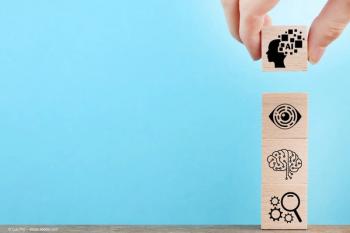
Eye contact is key to meaningful conversation, connection
Investigators at Dartmouth College have found that eye contact during a conversation makes the discussion more appealing to its participants.
According to investigators, eye contact during conversation makes the discussion more appealing.
The study published recently in the journal
"When two people are having a conversation, eye contact signals that shared attention is high - that they are in peak synchrony with one another," Wohltjen said in Dartmouth College news release.
Investigators found that during deep conversation, participants’ pupils dilate in synchrony.
In the release, Wohltjen noted that as the eye contact persists, that synchrony then decreases.
“We think this is also good because too much synchrony can make a conversation stale,” she said. “An engaging conversation requires at times being on the same page and at times saying something new."
Wohltjen explained that eye contact seems to be one way we create a shared space while also allowing space for new ideas.
According to the release for the study, 94 participants wore eye-tracking glasses during 10-minute conversations, which were videotaped. The study participants then then watched the discussions and rated how engaged they were.
During the research, investigators studied pupillary reactions during instances of eye contact. They found that people make eye contact as pupil synchrony is at its peak. Pupillary response decreases and recovers when eye contact is broken. The data also demonstrated a correlation between instances of eye contact and higher levels of engagement during the conversation.
According to co-author Thalia Wheatley, PhD, a professor of psychological and brain sciences at Dartmouth, it has been assumed in the past that eye contact creates synchrony.
“Our findings suggest that it's not that simple," she said. "We make eye contact when we are already in sync, and, if anything, eye contact seems to then help break that synchrony. Eye contact may usefully disrupt synchrony momentarily in order to allow for a new thought or idea."
Wheatley described conversation as "a creative act in which people build a shared story from independent voices."
"Moments of eye contact seem to signal when we have achieved shared understanding and need to contribute our independent voice,” she concluded.
Reference
1. Sophie Wohltjen, Thalia Wheatley, PhD; Eye contact marks the rise and fall of shared attention in conversation. PNAS September 14, 2021 118 (37) e2106645118; https://doi.org/10.1073/pnas.2106645118
Related Content:
Newsletter
Keep your retina practice on the forefront—subscribe for expert analysis and emerging trends in retinal disease management.













































